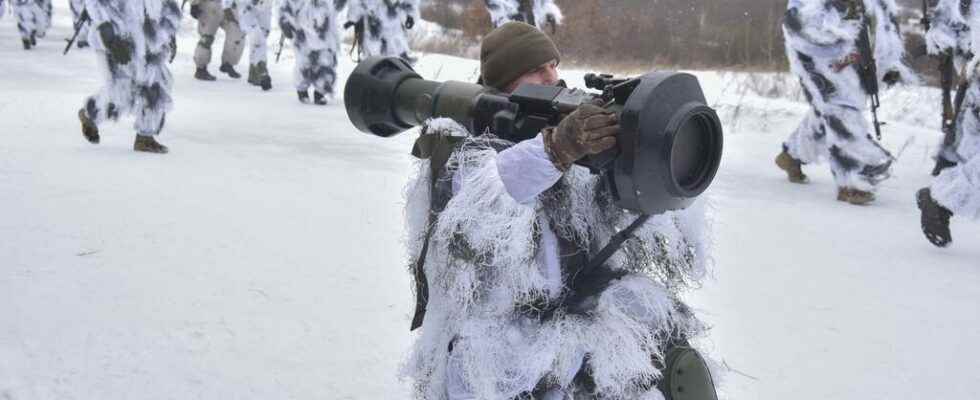Several governments have announced the sending of military aid to Ukraine, nearly twenty European countries in particular have responded to appeals from Kiev. Military aid that includes missiles capable of withstanding the threat of armored vehicles.
The images are striking. On tens of kilometers, surging towards Kiev, columns of Russian armored vehicles. On the roads, side-by-side, forming traffic jams, military trucks for supplies, infantry fighting vehicles. And to break through the lines of defense, heavy armor. The famous T72. This is the most common tank model in the Russian army. A fairly old vehicle, since it dates from the end of the Cold War, but regularly modernized. It remains very effective.
These last weeks, Western armies have nevertheless provided Ukraine formidable equipment to fight these motorized battalions. Starting with the portable Javelin missile. With a range of one and a half kilometres, it has proven itself in Iraq against T72 tanks. The United States and Estonia have delivered several hundred Javelins to Ukraine. The United Kingdom has, for its part, delivered a large stock of NLAW, a portable anti-tank missile also known under the Swedish name of Robot 57. If its range does not exceed 800 meters, it is however very suitable for areas urban.
Berlin and the Netherlands have, for their part, ceded more than 1,000 Panzerfaust anti-tank hollow-charge rockets. As for France, it could deliver MMPs, medium-range missiles. Effective up to 5 kilometers, its guidance allows the shooter not to reveal his position.
If the mastery of the skies belongs to the Russian army, Ukraine is nevertheless able to resist the air threat, in particular that of helicopters, with the Stinger, an American surface-to-air missile which became famous during the invasion of Afghanistan by the Soviets. Germany and the Netherlands have authorized the delivery of 700 missiles of this type. Thanks to these missiles of all types, the outnumbered Ukrainian army has the ability to slow down the Russian steamroller.
An all-out guerrilla warfare
Asymmetry, the response of the weak to the strong, is the art of guerrilla warfare. And the Ukrainian forces excel in this regard. On the twelfth day of war, on the Russian side, the reverses accumulate. Logistics are struggling to keep up. The spearhead of the offensive stalled north of Kiev. Thanks to the Stinger anti-aircraft missiles, the Ukrainians shot down nine Russian aircraft on Saturday March 5, which partly explains the slowdown in air activity.
On the ground, thanks to the Javelin missiles, they would manage to destroy around twenty armored vehicles every day. At this rate, without indiscriminate aerial bombardments on the cities and without the massive use of artillery, the Russian army could have lost a third of the troops committed within a few weeks.
The strength of the Ukrainian army is to have very seasoned special forces, soldiers trained in 2015 by the United States and prepared to face a Russian invasion. Ukrainian commandos are equipped with recognized snipers. According to Kiev, these shooters would have eliminated a few days ago the commander of the 7th Russian airborne division as well as a deputy commander of the 41st combined arms army.
British and Canadian commandos have also been deployed in recent months to train Ukrainians in sabotage techniques. The Ukrainian army, on the Russian model, can also rely on several hundred Spetznaz, elite soldiers favoring harassing combat. Ukrainian forces have an intimate knowledge of their adversary, a considerable asset for effectively conducting a guerrilla war.
► Read also: War in Ukraine: Donbass veterans return to service to defend Kiev
